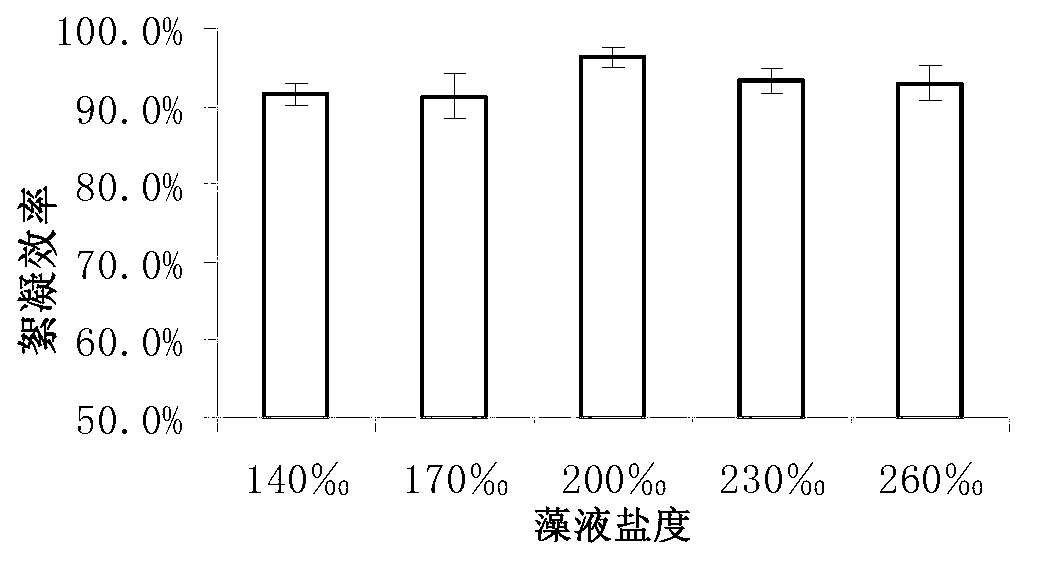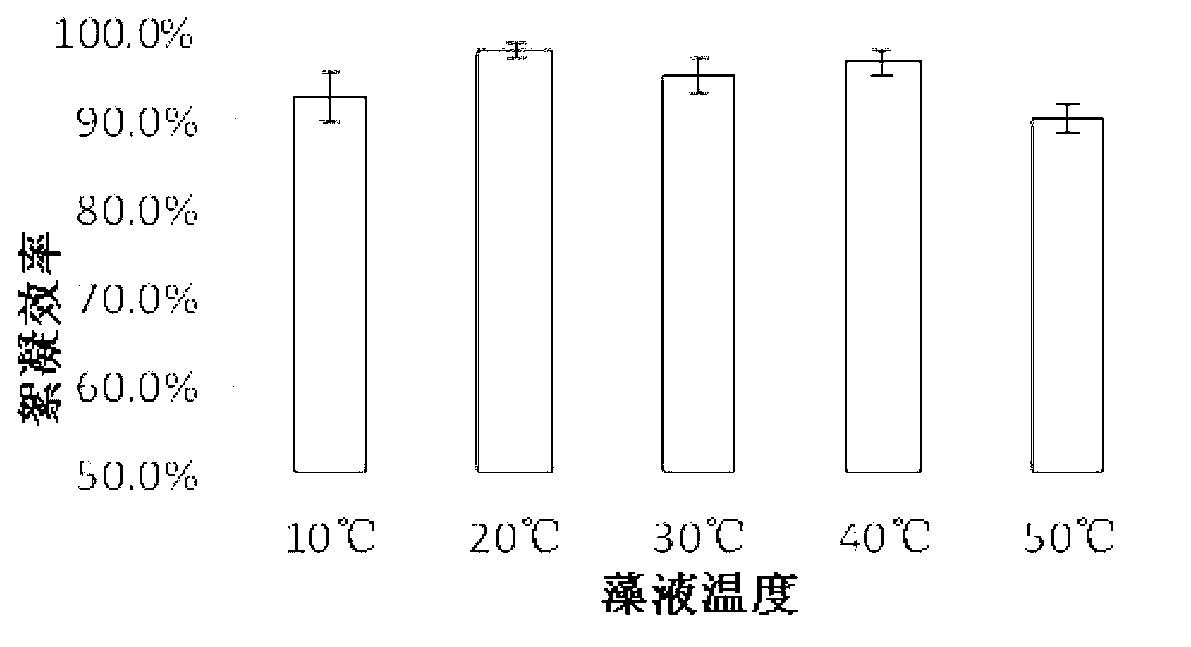Method for harvesting dunaliella salina
A harvesting method and salina technology, applied in the field of microalgae, can solve the problems of high equipment cost, high energy consumption, product loss and the like
- Summary
- Abstract
- Description
- Claims
- Application Information
AI Technical Summary
Problems solved by technology
Method used
Image
Examples
Embodiment 1
[0027] After 20 days of winter salina culture, the algal cell density reached 3.32×10 6 cells / mL, the salinity of the algae solution is 134‰, the temperature of the algae solution is 15°C, and the pH is 8.2. Add PAC to reach a final concentration of 100mg / L. After stirring evenly, let stand for 41 h and then remove the supernatant. The algae mud was collected and the flocculation efficiency was 92.2%.
Embodiment 2
[0029] After 20 days of winter salina culture, the algal cell density reached 5.18×10 6 cells / mL, the salinity of the algae solution is 107‰, the temperature of the algae solution is 15°C, and the pH is 7.6. Add PAC to reach a final concentration of 150mg / L. After stirring well, let it stand for 24 hours and then remove the supernatant. The algae mud was collected and the flocculation efficiency was 93.6%.
Embodiment 3
[0031] After 12 days of summer salina cultured, the algal cell density reached 2.75×10 6 cells / mL, the salinity of the algae solution is 220‰, the temperature of the algae solution is 30°C, and the pH is 8.5. Add PAC to reach a final concentration of 130mg / L. After stirring well, let it stand for 24 hours and then remove the supernatant. The algae mud was collected and the flocculation efficiency was 90.1%.
PUM
 Login to View More
Login to View More Abstract
Description
Claims
Application Information
 Login to View More
Login to View More - R&D
- Intellectual Property
- Life Sciences
- Materials
- Tech Scout
- Unparalleled Data Quality
- Higher Quality Content
- 60% Fewer Hallucinations
Browse by: Latest US Patents, China's latest patents, Technical Efficacy Thesaurus, Application Domain, Technology Topic, Popular Technical Reports.
© 2025 PatSnap. All rights reserved.Legal|Privacy policy|Modern Slavery Act Transparency Statement|Sitemap|About US| Contact US: help@patsnap.com



